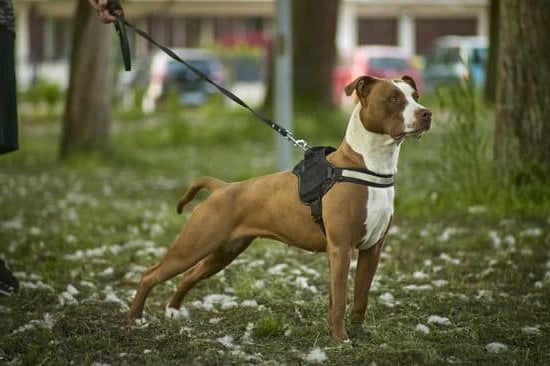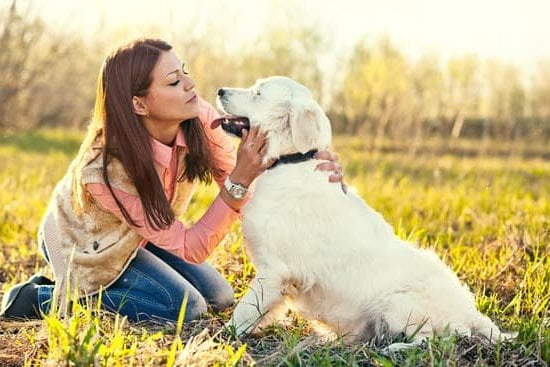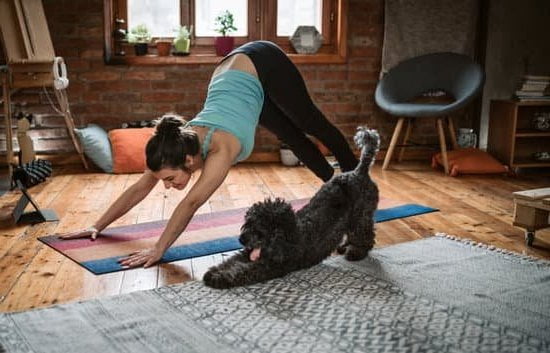Potty training is one of the most important aspects of owning a dog. It not only ensures the well-being and hygiene of your pet but also brings convenience to you as an owner. Properly potty training your dog can save you from potential headaches and frustrations down the road. This article will guide you through the process of potty training your dog, covering all the necessary steps and providing helpful tips along the way.
Without proper potty training, both you and your dog can face negative consequences. Frequent accidents in the house can lead to stained carpets, unpleasant odors, and damage to furniture. Additionally, a lack of proper potty training may cause stress and anxiety for both you and your dog. By investing time and effort into this essential training process, you can ensure a clean home environment and create a harmonious bond with your four-legged companion.
In order to successfully potty train a dog, understanding the basics is key. Knowing when to start potty training and establishing a routine are crucial components for successful results. This article will delve into these aspects, as well as explore how to set up a dog-friendly potty area within your home or yard. By preparing yourself with these fundamental principles, you will be well-equipped to embark on this important journey of potty training your furry friend.
The next paragraphs will cover step-by-step instructions on using positive reinforcement to reward successful potty behavior, establishing a regular potty schedule, handling accidents effectively without resorting to punishment, utilizing crate training as a helpful aid in the process, troubleshooting common challenges that may arise during potty training, and finally celebrating success once your dog is fully trained. So let’s get started on this rewarding journey towards having a well-potty trained dog.
Understanding the Basics
Potty training is an essential aspect of raising a dog and ensuring a happy and healthy life for both the pet and owner. However, knowing when to start the potty training process is key to its success. By understanding the basics of when to begin potty training and establishing a routine, owners can set their dogs up for success in this crucial area.
Appropriate Age for Potty Training
One of the most frequently asked questions by new dog owners is when to start potty training their furry friends. The ideal age to begin potty training varies depending on the breed, but generally, it is recommended to start when the puppy is between 12 and 16 weeks old. At this age, puppies have better control over their bladder and bowel movements, making the training process easier.
It’s important to note that each puppy is different, and some may be ready earlier or later than others. Observe your puppy’s behavior closely; signs such as sniffing around or circling before eliminating can indicate that they are ready for potty training. Additionally, puppies should have developed enough physical coordination to walk comfortably outside or on designated indoor mats.
Establishing a Routine
Consistency plays a vital role in successful potty training. Establishing a routine helps your dog understand where and when they should eliminate. Set specific times for bathroom breaks throughout the day and take your dog outside immediately after waking up, eating meals, drinking water, playing, or napping.
When starting potty training, it’s important not to give your puppy free access to the entire house right away. Begin by confining them in a small area or using baby gates to limit their movements until they become more reliable with their potty habits. This confinement helps prevent accidents and establishes good habits from day one.
By understanding when to start potty training and implementing a consistent routine from an early age, owners can set their dogs up for success in this crucial aspect of their development. Remember to be patient and consistent in your approach, as each dog learns at their own pace. With time and dedication, you’ll be on your way to enjoying a well-potty trained dog.
Preparation is Key
Setting up a dog-friendly potty area is essential for successful potty training. By creating a designated space for your dog to relieve themselves, you can easily establish consistency and help them understand where they should go. Here are some tips on how to set up a dog-friendly potty area:
- Choose an appropriate location: Selecting the right spot for your dog’s potty area is crucial. If you have a backyard, consider designating a specific area that is easily accessible to your dog. If you live in an apartment or don’t have outdoor space, you can create an indoor potty area using pee pads or artificial grass.
- Establish boundaries: It’s important to clearly define the boundaries of the potty area for your dog. You can use fencing, rocks, or other visual cues to indicate where they should go. This will help prevent them from using other parts of the house or yard as their toilet.
- Make it comfortable and inviting: Dogs are more likely to use a specific area if it feels comfortable and inviting to them. Ensure that the potty area has proper drainage so that it doesn’t become muddy or messy. Consider adding some shade, especially if it’s an outdoor potty area exposed to the sun.
- Cleanliness is key: Regularly clean and maintain the potty area to ensure hygiene and prevent odors from building up. Pick up any waste promptly and disinfect the area regularly. This will help keep your dog’s potty area clean and encourage them to continue using it.
| Tips for setting up a Dog-Friendly Potty Area |
|---|
| Choose an appropriate location |
| Establish boundaries |
| Make it comfortable and inviting |
| Cleanliness is key |
By following these tips, you can create a dog-friendly potty area that promotes successful potty training. Remember to be patient with your dog and provide positive reinforcement when they use the designated area correctly. With consistency and proper training, your furry friend will soon learn where they are supposed to go, leading to a harmonious and clean living environment for both you and your pet.
The Power of Positive Reinforcement
Proper dog potty training requires consistency and positive reinforcement. The use of rewards and praise plays a crucial role in successfully potty training your dog. Positive reinforcement helps to motivate your dog, reinforce desired behaviors, and create a positive association with the act of pottying in the appropriate area. By understanding the power of positive reinforcement, you can effectively train your dog to use the designated potty area consistently.
The Concept of Positive Reinforcement
Positive reinforcement involves rewarding your dog for displaying the desired behavior, in this case, eliminating waste in the designated potty area. When your dog successfully uses the appropriate spot, you can provide immediate rewards such as treats or verbal praise to reinforce the behavior. This positive association encourages your dog to repeat the action in the future.
It is important to note that timing is crucial when using positive reinforcement. You should reward your dog within seconds after they have finished eliminating waste in order for them to associate the reward with their action. Delaying rewards may confuse your dog and can hinder their progress in potty training.
Suitable Rewards and Effective Praise Techniques
When selecting rewards for successful potty training, it is essential to choose something that motivates your dog. Different dogs have different preferences – some may respond well to food treats while others may be more motivated by toys or playtime. Experiment with different options and observe what stimulates your dog’s interest and enthusiasm.
In addition to tangible rewards, verbal praise is also a powerful tool in reinforcing good behaviors during potty training. Dogs thrive on attention and affection from their owners, so providing them with sincere praise and affectionate words after they have successfully used the designated potty area will further strengthen their motivation to repeat this behavior.
Remember that consistency is key when using rewards and praise for successful potty training. Be consistent in both timing (rewarding immediately) and delivery (being enthusiastic) of rewards and praise. This consistency will reinforce your dog’s understanding of what they have done correctly and accelerate the potty training process.
By harnessing the power of positive reinforcement through suitable rewards and effective praise techniques, you can make potty training a positive experience for your dog. In turn, your furry friend will quickly learn to use the designated potty area consistently, leading to a more harmonious and clean living environment for both you and your pet.
Consistency is King
Establishing a consistent potty schedule is crucial for successful potty training. Dogs thrive on routine and structure, so having a set schedule helps them understand when and where to do their business. Here are some tips for establishing a regular potty schedule:
- Determine the appropriate frequency: The frequency of potty breaks depends on several factors, including the dog’s age, size, and breed. Generally, puppies have smaller bladders and need to go outside more frequently than adult dogs. As a general rule of thumb, puppies should be taken outside to eliminate every 1-2 hours, while adult dogs can usually hold it for 4-6 hours.
- Choose specific times for potty breaks: Consistency is key in establishing a regular potty schedule. It’s important to choose specific times throughout the day when you will take your dog outside to eliminate. This could be first thing in the morning, after meals, before bedtime, and at regular intervals in between.
- Use verbal cues: Using consistent verbal cues during potty breaks can help signal to your dog that it’s time to go. For example, you can use phrases like “go potty” or “do your business” while they are eliminating, and eventually they will associate those cues with going outside to do their business.
- Be patient and observe your dog: Pay attention to your dog’s behavior and signs that they need to go outside. This could include sniffing around, circling an area, or showing restlessness. By being attentive and taking them outside as soon as you notice these signs, you can prevent accidents from happening indoors.
- Keep records: In the early stages of potty training, it may be helpful to keep a record of when your dog eliminates both inside and outside the house. This will help you identify patterns or trends in their behavior that can guide you in establishing an appropriate schedule.
By following these tips and establishing a regular potty schedule, you are setting your dog up for success in their potty training journey. Consistency will help them understand the expectations and make it easier for them to adapt to a routine. Remember, accidents may still happen during the training process, but with patience, consistency, and positive reinforcement, your dog will become more reliable in their potty habits over time.
Accidents Happen
Accidents are an inevitable part of the potty training process. No matter how diligent you are, there will be times when your dog has an accident in the house. It’s important to approach these situations with patience and a calm demeanor. Reacting with anger or punishment can potentially set back your potty training progress. Instead, follow these practical tips for handling and correcting accidents during the potty training process:
- Act quickly: When you discover an accident, it’s crucial to clean up the mess as soon as possible. Dogs have a powerful sense of smell, and if they detect residual odors from previous accidents, they may be more likely to eliminate in that same spot again.
- Use proper cleaning products: Ordinary household cleaners may not effectively eliminate the scent of urine or feces, which could attract your dog back to the same spot. Instead, use enzymatic cleaners specifically designed for removing pet stains and odors.
- Do not punish your dog: It’s important to resist the urge to scold or punish your dog for accidents. This can create fear and anxiety around eliminating, leading to further difficulties with potty training. Remember that accidents are a normal part of the learning process.
- Redirect your dog: If you catch your dog in the act of having an accident, calmly redirect them outside or to their designated potty area using a verbal command or leash guidance.
- Reinforce positive behaviors: When your dog successfully eliminates in their designated area, be sure to provide immediate praise and rewards. This positive reinforcement helps them understand what behavior is desired.
- Consistency is key: During this phase of potty training, it’s essential to maintain consistency with your routine and supervision until accidents become less frequent or cease altogether.
By following these tips and remaining patient throughout the potty training process, you can effectively deal with accidents while gradually teaching your dog where it is appropriate to relieve themselves. Remember, accidents are a temporary setback, and with time and consistency, your dog will become fully potty trained.
The Role of Crate Training
Crate training can be an extremely helpful tool in the potty training process for dogs. It provides a safe and comfortable space for your dog while also aiding in their potty training journey. Crate training helps create a routine and establishes boundaries, making it easier for dogs to understand when and where they should relieve themselves.
When introducing crate training as a potty training aid, it is important to start slowly and make the crate a positive and inviting space for your dog. Begin by placing treats or toys inside the crate to encourage them to enter willingly. Gradually increase the amount of time your dog spends inside the crate, starting with short intervals and gradually extending them over time.
It’s essential that you choose the right size crate for your dog. The crate should be large enough for your dog to stand up, turn around, and lie down comfortably, but not too spacious that they have enough room to eliminate in one corner and sleep in another. Dogs are less likely to eliminate in their sleeping area, so having a properly sized crate will help prevent accidents inside.
Utilizing a consistent schedule with the crate can greatly aid in successful potty training. Take your dog outside first thing in the morning, after meals, before bedtime, and every few hours throughout the day. After exiting the crate, immediately take them to their designated potty area outside and give them verbal cues such as “go potty” or “be quick.” Be patient during this process as some dogs may need more time to relieve themselves than others.
Remember that crates should never be used as punishment for accidents or worked into excessively long periods of time. The goal is to provide a safe environment that aids in teaching your dog proper toileting habits. With patience, consistency, and positive reinforcement techniques along with using appropriate-sized crates, you will find that crate training can be an effective tool in successfully potty training your furry friend.
By incorporating this method into your overall potty training strategy, you will be setting your dog up for success and creating a harmonious living environment for both you and your pet.
Troubleshooting Common Potty Training Challenges
Potty training a dog can sometimes present its fair share of challenges. Despite your best efforts, there may be instances where your dog experiences regression or resistance during the training process. It is important to be prepared for these common challenges and have strategies in place to overcome them.
One common challenge that dog owners face during potty training is regression. Regression occurs when a previously trained dog starts having accidents again indoors. This can happen for various reasons, such as changes in routine, stress, or medical issues.
To address regression, it is important to revisit the basics of potty training. Reinforce the routine and schedule established during initial training and ensure consistent supervision and reinforcement of desired behaviors. For dogs experiencing stress or anxiety-related regression, consider identifying and addressing the underlying cause of their distress.
Resistance is another common challenge faced during potty training. Some dogs may show resistance towards going potty outside or using a designated area within the house or yard. This can be due to fear, discomfort, or simply a lack of understanding.
To address resistance, it is important to make the designated potty area more appealing and comfortable for your dog. Try using positive reinforcement techniques like treats or praise to create positive associations with using the designated area. Additionally, gradually expose your dog to different environments and surfaces outside so they become comfortable with going potty in various locations.
Conclusion
In conclusion, potty training is an essential aspect of responsible dog ownership. By properly potty training your dog, you not only ensure their well-being and happiness but also make your life as a pet owner significantly more convenient. Throughout this article, we have discussed the importance of establishing a routine, creating a dog-friendly potty area, using positive reinforcement, maintaining consistency, handling accidents with patience and understanding, utilizing crate training, and troubleshooting common challenges.
By implementing these tips and strategies, you can celebrate the success of potty training your furry friend. Imagine a life free from messes and constant clean-ups. A well-potty trained dog brings tremendous benefits to both you and your four-legged companion. You will enjoy a cleaner home environment, increased peace of mind when leaving your dog alone for longer periods, and enhanced bonding opportunities as you communicate effectively with your pet.
We encourage you to take the time and effort to properly potty train your dog. Remember that every dog is unique, so be patient with the process and adapt to their individual needs. With consistency, positive reinforcement, and love, you can successfully guide your furry friend through this important milestone. So go ahead and start implementing the tips provided in this article – soon enough you’ll be celebrating a harmonious life with your well-potty trained dog.
Frequently Asked Questions
How do I teach my dog to potty?
Teaching a dog to potty requires consistency, patience, and positive reinforcement. One effective method is to establish a designated potty area in your yard and consistently bring your dog to that spot, especially after meals, playtime, or waking up from naps. Use a command word or phrase consistently whenever you take your dog outside so they can associate it with going potty.
When your dog eliminates in the appropriate area, reward them with praise and treats immediately. On the other hand, if accidents happen inside the house, it’s essential not to scold or punish your dog as this may create fear or anxiety associated with elimination. Instead, focus on cleaning up the mess thoroughly without drawing attention to it.
How long does it take to potty train a dog?
The time it takes to potty train a dog depends on various factors like breed, age, individual temperament, and consistency in training efforts. While some dogs may grasp the concept within weeks or even days, others may take months to become fully house-trained. Consistency is key in achieving success regardless of how long it takes.
It’s important to maintain a regular schedule for feeding and bathroom breaks throughout the day while gradually expanding the time between trips outside as your dog learns more control of their bladder and bowels. Be prepared for occasional setbacks during training and understand that each dog is unique in terms of their learning pace.
What is the hardest dog to potty train?
Different breeds may present different challenges when it comes to potty training, but it’s difficult to determine an overall “hardest” breed since individual dogs within any breed can vary widely in temperament and learning ability. However, certain small breeds like Chihuahuas or Dachshunds are often considered more challenging due to their strong-willed nature or tendency towards stubbornness.
Additionally, some rescue dogs who have had inconsistent housetraining experiences or spent prolonged periods in shelter environments may require extra patience and effort during the potty training process. Ultimately, consistent training techniques, positive reinforcement, and understanding the unique needs of your dog are crucial factors in successfully potty training any breed.

Welcome to the blog! I am a professional dog trainer and have been working with dogs for many years. In this blog, I will be discussing various topics related to dog training, including tips, tricks, and advice. I hope you find this information helpful and informative. Thanks for reading!





